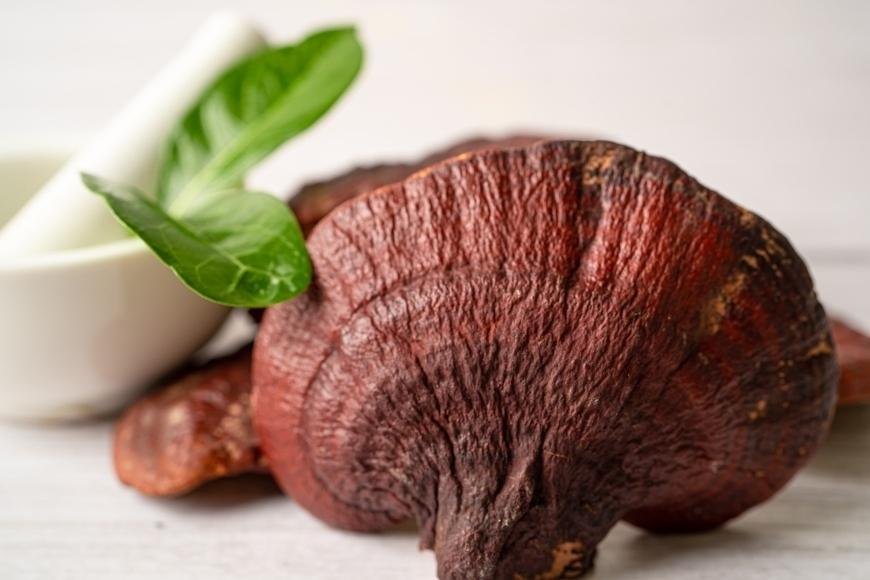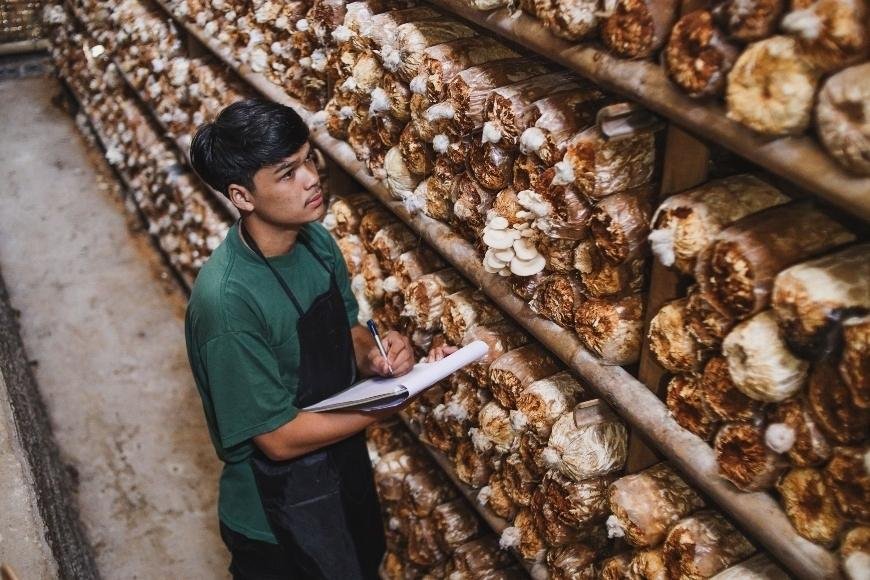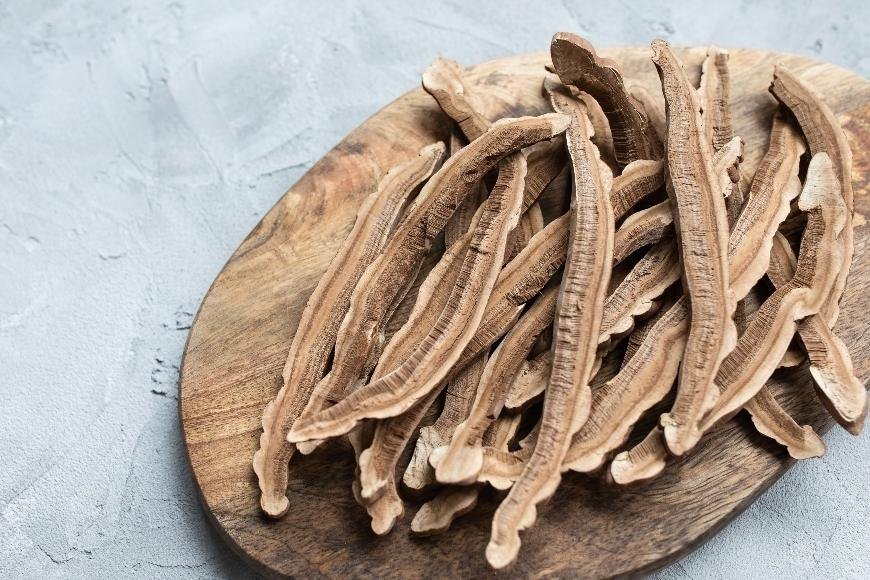How to Grow Reishi
Learn how to grow Reishi mushrooms at home with our step-by-step indoor cultivation guide. Learn about reishi spawn, substrate preparation, and more

Learning how to grow Reishi mushrooms can be a fascinating and rewarding endeavor. This ancient medicinal fungus is not only revered for its health benefits but also offers an intriguing challenge for indoor cultivation enthusiasts.
In this guide, we'll delve into the process of growing Reishi mushrooms, from choosing the right species to substrate preparation and inoculation. You will learn about obtaining high-quality reishi spawn, creating optimal growth conditions, and finally harvesting your bounty.
We'll also touch on drying techniques that maintain their potency as well as effective storage methods. By following these steps, you can successfully grow Reishi mushrooms in your own home. So let's dive into the world of Reishi cultivation!
Table of Contents:
- Choosing the Right Reishi Species
- Preparing the Perfect Environment for Growing Reishi Mushrooms
- Obtaining Spawn
- Maintaining Optimal Growth Conditions for Reishi Mushrooms
- Harvesting and Drying Reishi Mushrooms
- Storing Reishi Mushrooms: Tips for Prolonging Potency
- FAQs in Relation to How to Grow Reishi
- Conclusion
Choosing the Right Reishi Species
Reishi mushrooms, otherwise known as Ganoderma lucidum, are a favorite among those who appreciate fungi for their healthful properties and distinctive growth forms. However, there are various species of Reishi mushrooms available, each with its own distinct qualities.
The most common type is the red Reishi mushroom which is widely recognized for its potent health benefits including boosting immunity and reducing stress. Another variant is the black Reishi or Ganoderma sinense which has similar but milder effects compared to its red counterpart.
If you're interested in growing your own supply of these fascinating fungi at home, you might want to consider red Reishi, due to their higher potency and easier cultivation process. But if you prefer something less intense yet still beneficial, then black reishis could be your best bet.
When choosing what kind of reishis to grow at home, it's crucial to take into account factors such as personal preferences in terms of taste and texture (yes, they can be eaten too.), availability of spawn or culture from reputable suppliers like North Spore, as well as how much time and effort you're willing to invest in taking care of them since different types may require varying levels of maintenance.
In addition to this, remember that regardless of whichever species you choose, all reishis have impressive medicinal properties, so don't worry about missing out on any potential health benefits.
To sum up: whether it's for recreational use or purely therapeutic purposes, knowing how each variety differs will help guide your decision-making process when starting out on this exciting journey towards becoming a successful home-based mycologist. So go ahead - explore different options until finding one that fits perfectly into your lifestyle while meeting expectations regarding yield, quality, and quantity alike.
Preparing the Perfect Environment for Growing Reishi Mushrooms

Growing Reishi mushrooms at home can be a fun and rewarding experience, but it requires attention to detail. The first step is creating the right environment for your fungi friends.
Humidity and Temperature
Reishi mushrooms love high humidity levels, around 85-95%. You can achieve this by using a humidity tent or chamber and misting the growing area regularly. Maintain the temp in a range of 70-80°F (21-27°C), watching it carefully to avert any sudden shifts that could be detrimental to their growth.
Light and Air Circulation
Reishis need some light exposure during their fruiting phase, but they don't require direct sunlight. Indirect or ambient light is sufficient. Good air exchange is also crucial to prevent carbon dioxide build-up, which can be achieved through natural ventilation or fans on low settings.
Substrate and Cleanliness
Hardwood logs, such as oak and maple, are the best substrates for cultivating Reishis. Avoid resinous woods like pine as they contain harmful substances. Nutrient-enriched substrates, such as straw mixed with bran or rice hulls soaked in molasses solution, can enhance mushroom yield and quality. Maintaining cleanliness throughout cultivation is vital too. Remember to sterilize tools before use and keep the growing area free from contaminants that might introduce diseases into your crop.
You'll be able to cultivate healthy and tasty Reishi mushrooms quickly with these tips.
Obtaining Spawn
When growing Reishi mushrooms, getting the right spawn is crucial. Spawn refers to mycelium of a fungus grown on a substrate like grain or sawdust. This is what you'll introduce into your own substrate to start the growth process.
You can buy Reishi mushroom spawn from online retailers, some suppliers provide high-quality, ready-to-use spawn that has been carefully cultivated under sterile conditions.
The type of spawn you choose will depend on your specific needs and circumstances. Grain spawn colonizes quickly but may not be suitable for outdoor grow operations because it's more susceptible to contamination by other fungi.
Sawdust spawn takes longer to colonize but is less prone to contamination and better suited for larger-scale operations or outdoor cultivation efforts. You could also consider plug spawns, which are small dowels inoculated with mycelium - these are ideal for log-based cultivation methods.
No matter where you source your Reishi mushroom spawn from, proper storage before use is essential to maintain its viability and ensure successful colonization of your chosen substrate. Store purchased mushroom spawns in a cool place away from direct sunlight until they're ready for use - ideally at temperatures between 35-45°F (1-7°C).
If stored correctly, most types of commercially available mushroom spawns should remain viable for several months after purchase, although using them sooner rather than later will yield the best results.
- Note: Always check the expiration date when purchasing commercial spawns as older products may have reduced potency due to age-related degradation of the fungal mycelium contained within them.
Inoculating Substrate for Growing Reishi Mushrooms
Ready to grow your own Reishi mushrooms? The next step is inoculating the substrate with your spawn or culture. This process involves introducing the mycelium, which is essentially the root system of the mushroom, to a nutrient-rich environment where it can grow and eventually produce fruiting bodies - our desired Reishi mushrooms.
First, you'll need a suitable substrate for your Reishi. A mixture of hardwood sawdust and wheat bran works well as it mimics their natural habitat. Sterilize this mix by baking it in an oven at 160 degrees Fahrenheit for about two hours or pressure cooking at 15 PSI for 90 minutes.
Once cooled down, add your spawn to this sterilized substrate within a clean environment to avoid contamination from other fungi or bacteria. You can do this by breaking up the spawn into smaller pieces and mixing them evenly throughout your substrate using sterile gloves.
You then want to pack this mixture into Mycobags, sealable plastic bags designed specifically for cultivating mushrooms that allow gas exchange but keep out contaminants.
- Packing: Firmly pack each bag with around five pounds of your inoculated substrate mix without overfilling them as they need room to breathe and expand during growth.
- Sealing: Seal these bags tightly using an impulse sealer after removing any excess air inside through compression while being careful not to squish mycelium too much.
- Inoculation Points:Create small holes (inoculation points) on sides of these sealed bags using a sterile needle allowing mycelium access outside towards oxygen necessary for its growth.
Your setup should now be ready. Keep these inoculated Mycobags in a dark place maintaining a temperature between 70-80 degrees Fahrenheit until fully colonized, which usually takes around four weeks depending upon the strain used and environmental conditions maintained. Remember, patience plays a key role here.
Maintaining Optimal Growth Conditions for Reishi Mushrooms
Ensuring the right conditions for your Reishi mushrooms to grow is crucial for a successful yield. This involves monitoring temperature, humidity, lighting, and other factors.
Temperature Control
The optimal range for Reishi mushroom cultivation is 70-80°F (21-27°C). Lower temperatures can slow down growth, while higher ones may kill the mycelium. Use a digital thermometer to monitor the temperature accurately.
Humidity Levels
Adequate humidity levels are also essential as Reishi mushrooms require high moisture content to thrive. The optimal relative humidity should be around 85-95%. You can maintain this level by using a humidifier.
Lighting Conditions
Unlike many other mushroom species, Reishis do not need complete darkness but prefer indirect or low light conditions. Too much direct sunlight can dry out your substrate and harm the developing fungi.
Air Circulation and CO2 Levels
Fresh air exchange (FAE) plays an important role in mushroom cultivation as it helps reduce carbon dioxide levels that build up from mycelial respiration. High CO2 levels could inhibit growth. Regularly fanning your grow area or using an automated fan system can help ensure proper FAE.
pH Level of Substrate
The pH level of your substrate should ideally be slightly acidic - around 5-6 on the pH scale - since this supports better absorption of nutrients by the mycelium.
Remember, each strain might have its own specific needs, so always refer back to any instructions provided when you obtained your spawn. Don't forget to talk to your Reishi mushrooms. They might not talk back, but positive vibes never hurt anyone.
- Mushroom Appreciation
- Fungi Perfecti
Harvesting and Drying Reishi Mushrooms

Finally, the time has come to harvest your Reishi mushrooms. This exciting stage marks the culmination of your hard work and patience. To ensure maximum potency, it's important to harvest them when they have fully matured but before their spores are released.
You can tell if spore release has begun by looking for a whitish powder on the underside of the mushroom cap or on nearby objects. If you see this, it's best to harvest immediately to avoid a less potent product. Use a sharp knife or scissors to cut each mushroom at its base, being careful not to damage the mycelium network below.
Drying Methods
Properly drying your Reishi mushrooms is crucial for preserving their potency over time. There are two common methods used: air-drying and dehydrating with heat.
Air-Drying
Air-drying is a simple method that involves placing your freshly harvested mushrooms in a well-ventilated area away from direct sunlight until they're completely dry. Drying with air can take some time, generally around seven days depending on humidity. Learn more about air drying here.
Dehydrating with Heat
Using a food dehydrator or oven set at a low temperature (around 95°F) will speed up the drying process significantly - often taking only 24 hours instead of several days like air-drying. Check out this guide for more details on how to use heat dehydration effectively.
Remember, proper storage after drying plays an equally important role in maintaining freshness and potency. Here's some advice on storing dried mushrooms correctly once they're ready.
Storing Reishi Mushrooms: Tips for Prolonging Potency
So, you've harvested and dried your Reishi mushrooms - now what? Proper storage is key to maintaining their potency and freshness over time.
First things first, choose an appropriate container. Glass jars with airtight lids are ideal to prevent moisture and mold growth. Avoid paper or cloth bags that can absorb the mushroom's natural oils and reduce its potency.
Store your mushrooms in a cool, dark place like a pantry or cupboard. Avoid refrigerators and freezers as they can cause condensation and spoil your stash.
Prolonging Potency
To further preserve the potency of your Reishi mushrooms, add desiccant packets to each jar before sealing them up tight. These little packets absorb excess moisture in the air within the jar, helping keep conditions dry and stable for longer periods of time.
Regular Checks
Check on your stored mushrooms regularly - at least once every few weeks - for signs of mold growth, discoloration, or off smells. Discard any affected mushrooms immediately to prevent contamination spreading through the rest of the batch.
Tips for Long-Term Storage:
- Airtight Containers: Use glass jars with airtight seals to protect against humidity.
- Cool & Dark Place: Store away from light sources and heat.
- Add Desiccants: Include silica gel packs (desiccants) in each jar/container.
- Routine Checkups: Frequently inspect contents for signs of spoilage such as mold growth.
Remember, proper drying before storing is just as important. Reducing the moisture content helps to make it difficult for bacteria and mold spores to propagate.
By following these steps diligently, you'll ensure a fresh and potent supply of Reishi mushrooms whenever you need them - whether for medicinal purposes or simply to enjoy their unique flavor and texture.
FAQs in Relation to How to Grow Reishi
How to Grow Reishi Mushrooms: Tips and Tricks
To grow Reishi mushrooms successfully, use a sterile substrate, maintain optimal temperature and humidity, and provide indirect light. Reishi mushrooms prefer to grow on hardwood logs or stumps rather than directly on the ground, and they thrive best when grown on hardwoods like oak, maple, or birch. A single log can produce around 1-2 pounds of Reishi over its productive lifespan.
Conclusion
Growing your own batch of Reishi mushrooms can be a fun and rewarding experience, but it requires patience and care.
First, choose the right species and prepare the growing environment, ensuring that the temperature and humidity levels are optimal.
Next, obtain spawn and inoculate substrate, making sure to follow the instructions carefully.
Then, maintain growth conditions by monitoring the temperature, humidity, and light levels, and making adjustments as needed.
When the mushrooms are ready, harvest and dry them properly, and store them in a cool, dry place.
With these steps, you can successfully cultivate your own batch of Reishi mushrooms, which have various medicinal properties.




















































































































